The work on the existing 1U Intellijel pantels is awesome. It will be great to see more 1Us like Radio Music by Music Thing Modular, 1U Steppy, as well was some 3U modules that can be flipped to 1U
The work on the existing 1U Intellijel pantels is awesome. It will be great to see more 1Us like Radio Music by Music Thing Modular, 1U Steppy, as well was some 3U modules that can be flipped to 1U
With a bit of extra income coming in from multiple sources, I'm really considering taking the dive, but i have some concerns. I'm thinking about getting basically the AE modular starter rack 1, rehoused in their 16u eurorack adapter, with a few changes and putting that in a Tiptop Audio Mantis for future expansion, along with an Arturia Keystep. I understand that the AE system is limited to 0-5 volts on CV, is it also limited to 0-5 volts in it's audio signal? I don't want to plug in my guitar or, say, a line of One sample players and blow up my AE system. If it is limited to 0-5 for Audio, what would I do to step down levels simply? Would I use a VCA? Is an audio signal's voltage the same as it's amplitude? like instrument level vs line level vs modular level?
Rookie. Learning Guitar. Will one day build a rack.
Thanks for the feedback and your link, listening to your album right now and I like what I hear :) Branches is still with me :)
Cheers, Gabor
I am inspired by birth, death and the events inbetween.
Oh how curious!! Looks like we both released full albums on the same day... I wonder what the chances are given it is only a few weeks since we were taking about Branches - hope that's working out okay for you :)
Listening to your LP now and enjoy it so far - cheers :)))
Wow, never even saw that feature existed, thanks for pointing this out mode_analogue! That's much handier for sure.
not sure, but i believe your request is actually implemented in the current rack browser already.
if you look at the top-right there's a collection of tabs, one of which reads "Panel Selector On/Off". if activated, you can browse all available panel versions for that one module (when hovering your mouse over the desired module) and settle for the one you like most (or the one you're having) by clicking on the arrows. at least that's what i always do.
if a specific panel version is missing for the module in question you could just add another picture yourself to this single master entry and that way the database is not getting clogged up forever with countless versions of one and the same module.
just give it a try and see how it works for you;).....
Hello,
I'd be very handy to have the ability to easily duplicate a module if one wants to, for instance, create a 2nd version of a module with an alternative panel (or colour) without having to recreate the module from scratch and fill in all the details again.
The handiest will be to add a duplicate button on the module edit page to instantly create a new instance of the module that is all pre-filled and one only have to change, say, the picture.
I know I'm getting in way over my head here but...has anyone used multiple Maths modules?
Hey Garfield Modular,
Thanks for your feedback, glad you listened to and liked some of my tunes. I recorded all the tracks with my modular rack + a Nord Drum 2, which I triggered with either the Just Friends or Pam's New Workout.
And for sequencing I primarily used the OP-1.
Thanks again!
Cheers,
Gabor
I am inspired by birth, death and the events inbetween.
Hi Aphew Goodman,
Thanks a lot for sharing this. For some reason when I clicked on your link, the music started to play with the track #4 "The Tribe", a very nice and impressive start! I love the creativity in track #3 "The Merry" and track #7 "The Welder is a pretty high energy track ;-)
Perhaps most interesting is your track #8 "The Anti", full with nice and interesting sounds!
Well done! I wish you good luck with making music. Personally I wouldn't mind to hear more of The Anti or at least music into that kind of direction but that's just my personal taste.
Oh yes, have you done all with a modular system?
Kind regards, Garfield Modular.
For review reports of Eurorack modules, please refer to https://garfieldmodular.net/ for PDF formatted downloads
The module posted by this user (balpirol) is not a Livewire product.
Information on the official product in development by Livewire can be found here:
http://www.monorocket.com/2020/01/09/flux-capacitor-update-9-jan/
steve R
monorocket.com
For what it’s worth, be mindful of the space adjacent to the power module. You can only place very shallow modules within 4 hp or so of that location, with the Quad Envelope manual saying it is 26mm deep (not counting connector placement, which can create problems even for the most shallow of modules there.)
This is definitely one of the things I’m least happy with regarding the Rackbrute, along with its angle adjustment being more limited than you’d assume (and actually more limited than what is shown in the manual!) :/
-- mvdirty
Thank you for your feedback!!!
Well, for one thing, this build is a bit too small to support two sets of mults. You might lose the 1U mult, as it's easily replaced by using inline mults or stackcables. Keep the Links, though.
Ears. Why? The Intellijel has external inputs, and you've got the stereo tile for it. If the idea is to have a "controller"-ish thing, then there's a few options for that, but the overall build seems deficient on LFOs. "Generative" tends to imply a lot of automated processes, and LFOs are the best way to generate cyclical waveforms that can work those. Removing the Ears and then dropping in a Doepfer A-145-4 gives you four of them under manual control.
But one caveat: generative composition tends to require a considerably larger build than this. I'm not saying it can't be done...but I am saying that trying to do that in a smaller build will be a bit frustrating since you don't have the modules to establish multiple signal paths. This can be especially true if you're doing ambient work, where one of the important musical factors is the variation in timbre between voices spread out along the timeline (see Eno's "1/1" for an example here). You might consider a bigger case to start with if you're sure that this is the direction you want to go in. So far, everything seems pretty decent...save for that build size issue.
Hey guys!
I'm pretty new to all of this but I'm super interested in developing an ambient-focused setup. I'm planning on getting the Intellijel 7U performance case for the connection capabilities and portability. I've been watching a bunch of videos about Eurorack (ambient and general) and have tried taking notes on what makes a "complete" setup, but I have never done this before and would absolutely love any advice on my setup so far and how to make it better! I know Clouds is discontinued but I've already got one (it's the only thing modular-related I own!). :)
Thanks so much!
Senor-bling,
I just tried what you suggested and it is the same very high pitched whining.
Thanks for the advice anyway
Since the first and last cases have dedicated output modules... does the high-pitched whine also appear over headphones when the cases are not connected to anything else? Do you have the whine in a different room (or outlet) as well?
my latest release, made on my rack
http://aphewgoodman.bandcamp.com/album/new-forms-of-dance
I am inspired by birth, death and the events inbetween.
It has something to do with me not reading notification emails from the provider.
Beep, Bopp, Bleep: info@modulargrid.net
It's working now. Thanks!
(I don't whether it has something to do with restarting my computer.)
I am working on it. On most browser it should work already again. Sorry that that slipped through :(
Beep, Bopp, Bleep: info@modulargrid.net
Hi. I can't connect to modulargrid from my main computer (Linux Mint running Firefox) because it says there's a certificate timing issue. (I am now connected with an old outdated browser that is more lax on security). Anybody else has this issue?
Thanks very much Lugia for your generous advice, it's much appreciated!
I will look into the ferrite clips. Are there particular ones I should be getting?
When you say wind the card between the "brick" and the cab, what do you mean by that?
I'm unsure where to attach the clips.
I am using a 15V 3.34A power brick (as supplied) for the EP-96 case, which should be plenty of Amps to power both the SV-1 and Voltage Research Laboratory modules?
Thanks also Ronin1973, I will try to eliminate each module one by one.
My modular racks are plugged into separate power points from my mixing desk, so I don't think that should be the problem?
Good point, Ronin...I remember one session in which I had a shortwave receiver in use for a randomish noise layer on a techno track. Heard something odd, though; it sounded like one of my synths. And sure enough, it WAS...my PPG Wave 2.3 was spewing RF up in the 8 MHz range and retransmitting the synth's sound! Naturally, I figured out how to layer that into the track, too...
Feh. You could do loads better with an ARP 2600 for teaching purposes, and that's from experience. Now if you could just GET one somewhere...wonder what the problem with that might be...?
Smooth transaction and fast delivery for a Stereomix Toppobrillo from @maciej83
Something to consider is also what other things are plugged into the same service that is driving your modular. Is your modular plugged into the same service that you're using to record or listen back?
There is the lengthy process of unplugging all of your modules and then listening to them plugged in one at a time and adding them to the modules marked "safe." If you power on with one module in each rack and there's no whine, then it's probably a module or multiple modules that are causing the noise.
Digital modules, especially those with LED or LCD screens can give off some nice amounts of noise. So work with the purely analog modules first to rule them out.
Bought a Batumi Xaoc devices module from @maciej83
Great guy, good communication, 10/10 reccomend
A
yep, quite frequently. its a nice little quantizer for the price and the space. isn't perfect, but does the job just fine.
Saw your video on Youtube...
Do you still use the Tune regularly? Is it good with Pam?
If you've watched any of the Youtube vids, I'm pretty sure this is going to be his Instrument.
Enjoy your spare HP, don't rush to fill every last space, this is not like filling sticker books. Resist the urge to 'complete' your rack, its never complete so just relax.
Sure isn't my idea of a clearly-understandable teaching system. Hopefully this is just an inventory of modules that get pulled and put into separate cabs to teach specific principles.
Have you found any other devices that can be removed with the same effect as when the SV-1 gets pulled? This sounds like two possible issues...
1) The external P/S is outputting HF garbage. Now, some devices react to this and some don't, but overall it's not something you want. The fix there would be to wind the card between the "brick" and the cab through some clip-on ferrites. In this case, you're putting together a blocking choke that won't pass AC effectively, and this cleans up the DC.
2) Something in these builds is causing the problem. However, since ALL of the cabs do this and none of them have any modules in common, this is a bit of a stretch. They DO have the same internals, however...same sort of DC regulators, same sort of busboards, etc. So, again, the suspicions come back to the power supply, but in this case the problem MIGHT be in the cab...so the key here is to beef up the filtering by using ferrites on the DC bus lines in each case.
But what if there's just ONE module in each case that spews rubbish that comes back down its ribbon, you ask? There's a fix there, too: https://www.mouser.com/Passive-Components/EMI-Filters-EMI-Suppression/Ferrites/Ferrite-Clamp-On-Cores/STAR-FLAT-Series/_/N-bw7t7?P=1yyb13v Yeah...clip-on ferrites for ribbon cables. These would suppress crud generated in said module from leaking back down the ribbon and polluting the DC busses.
An even more extreme...but one I've done...pre-emptive solution would be to replace the "line lump" altogether. On my AE system, I use a Tektronix linear power supply instead of a switching wall-wart. And since this IS a linear supply, it doesn't operate at the high frequencies that generate noise and crud. This is actually a simple swap...just find a suitable linear DC supply with the correct voltage and current capacity, connect a power cable with the right connector on one end and a dual banana on the supply end, and fire it up. Linear supplies have the "problem" of being fairly heavy and clunky (no such thing as a linear wall-wart!). Linear supplies ALSO have the benefit of being very low-ripple and variance, and that stability translates into better module stability overall.
One other point: if you push ANY power supply to a point near its current load maximum, it'll start to act goofy. This is because of what happens when you turn the synth on: current inrush loads can, for a very brief interval, spike OVER the typical operating current draw before dropping to nominal levels. The end result, over time, is that components in the power system start to wear prematurely...or in worst-case scenarios, they fail spectacularly (and often destructively!). Let's take the last cab, for example. In this case, the operating current is 755 mA on the +12 and 600 mA on the -12.
My rule of thumb...based on experience...is that typical solid-state circuits can inrush to at worst about 1/3rd higher than the operating current. So unless the P/S for that cab can output at least 1 A on the +12 and 800 mA on the -12, problems can develop. OPTIMALLY, you want to overspec your current capacity as much as is practically possible, but holding to that "+ 1/3" figure seems to afford the right level of protection for solid-state. And since I don't see anything with tubes here...in which case you might actually want the capability to supply DOUBLE the operating current for those milliseconds when they first light up...you're pretty safe with that guideline.
More than likely, your solution will be several of these. I'd start with the ferrites, though, since they're relatively cheap and easy enough to deal with (unless you need to put them on your internal DC busses, in which case a little "surgery" might be needed). Also...DO NOT neglect your signal lines when applying noise mitigation! They're just as capable of bringing crud into a modular as the power system! If this continues, consider some isolated/balanced output modules (if possible) instead of the typical attenuated output sorts, as the balancing transformer can cancel out anything coming back up the audio lines at the point where they connect to the modular. If you can't use a module (like in the dual Pitt cab), then get an Ebtech Hum Eliminator...because they work on loads more than just hum.
One additional thought which you may or may not already know: Note that the power module can only be placed in the upper left corner if you are standing the rack vertically.
For what it’s worth, be mindful of the space adjacent to the power module. You can only place very shallow modules within 4 hp or so of that location, with the Quad Envelope manual saying it is 26mm deep (not counting connector placement, which can create problems even for the most shallow of modules there.)
This is definitely one of the things I’m least happy with regarding the Rackbrute, along with its angle adjustment being more limited than you’d assume (and actually more limited than what is shown in the manual!) :/
I have three different cases from Pittsburgh Modular, all of which are giving off a high-pitched whine.
Does anyone know how I can get rid of this?
Is it a power brick issue?
Here are the cases with modules in place at the moment:
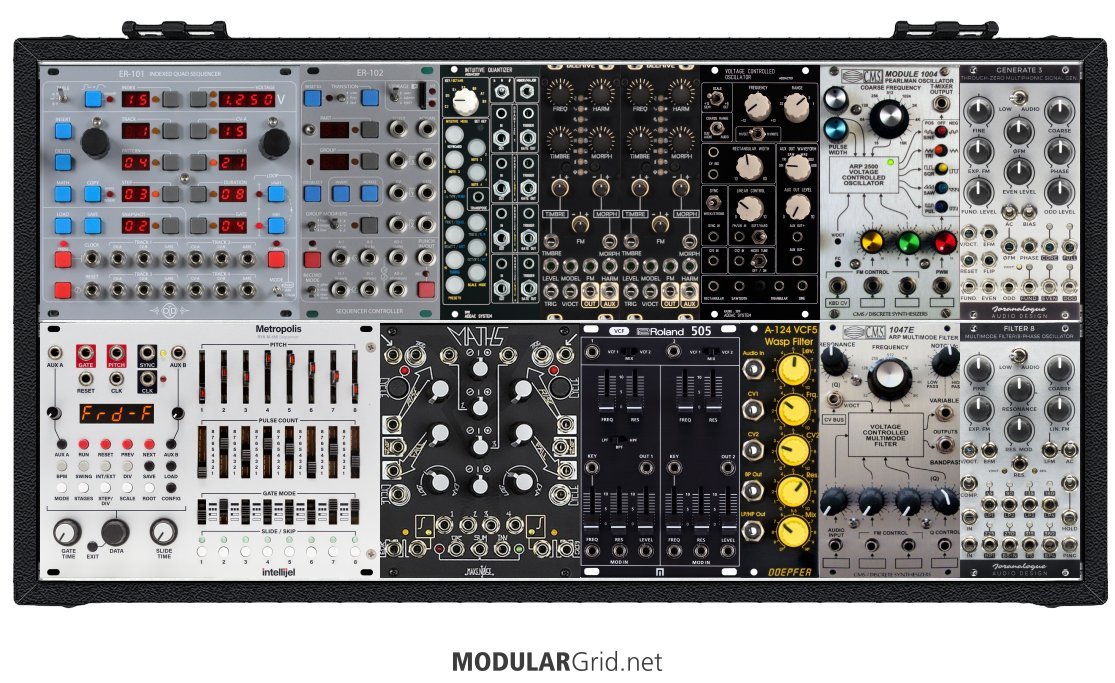
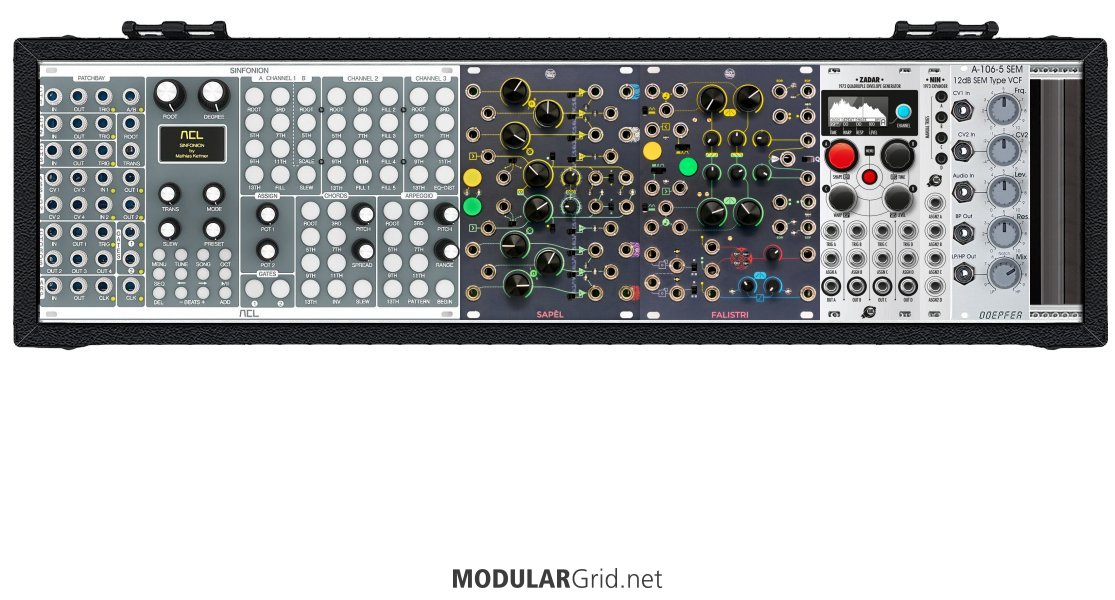
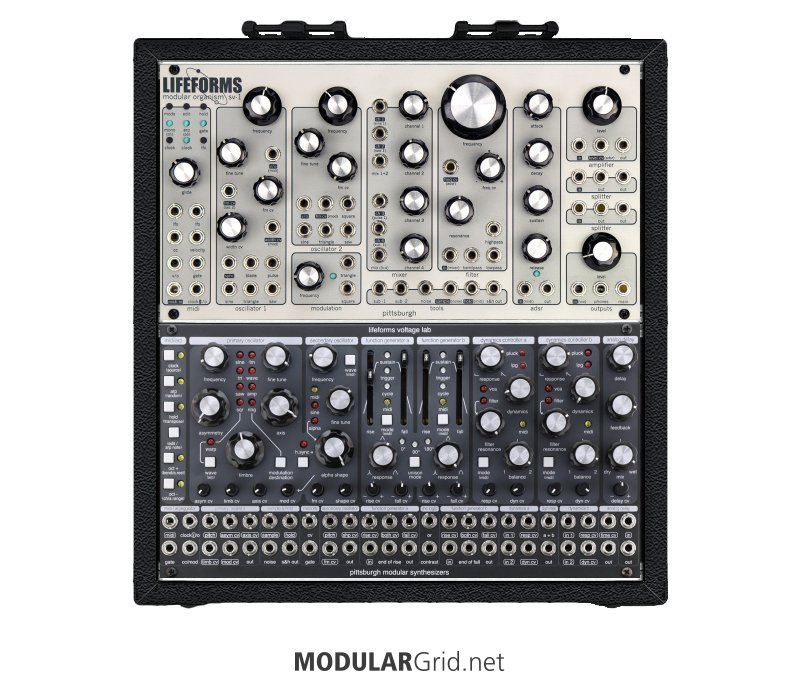
The Pittsburgh Modular Voltage Research Laboratory is especially noisy beside the Lifeforms SV-1.
When I take out the VRL and only have the SV-1 in there, it is silent.
It's really frustrating to have such loud interference in the signal, after having spent a fortune on this equipment.
Any tips or solutions would be greatly appreciated.
I did not know this thread existed, so I am playing catchup!
I have had lovely, mutually respectful, kind, thoughtful and overall very good experiences with @Drakhe (sadly no longer with us - may he rest in sonic bliss), @SuperNiCd, @gfcalvi, @vantablack, @benrecords, @aphew_goodman, @Slocap, @Jonjonjon and @nepohlazen - all very good people and pleasure to trade with :))
I hope you are all safe and healthy!
Lots of love
Kel Xx
Sold a module to @SamuelD: everything went smoothly, excellent communication.
I am fully aware that there are already many chat rooms for modular syntehsizers.
Not being content with Discord or Slack I have created another chat room for modular synthesizers, synthesizers, or any form of musicianship.
If you are like me and prefer free software, or just so happen to have an account on the Matrix chat network, feel free to join me in #musicians:whomst.online
Ah, yeah, it'll do that. You need to pull up the "Screenshot" and see if THAT is the right image. If not, go back to the rack view and hit "refresh" in your browser, THEN recheck the screenshot. Once it and the rack view are the same, you're golden.
it looks very similar to my system
but i have the ADDAC Monster 7 rows + 1 row in addition
molemuc
molemuc_addac_8_rows_2020_April
and this is not the end ;-)
At first I wanna thank you for your ideas.
I bought the Braids & Clouds before they disappeared from the market. To me they sounded good (live and via YouTube) and were pretty versatile, don't you think so?
Regarding the mutliples I will follow your advice. All other modules were just ides, so I would be really curious what you would change if this was your rack! I am totally open minded. As I also have the Minibrute and the Grandmother I already have some firepower (At least I am almost sure I do not need another analog oscillator).
So here is the changed rack:
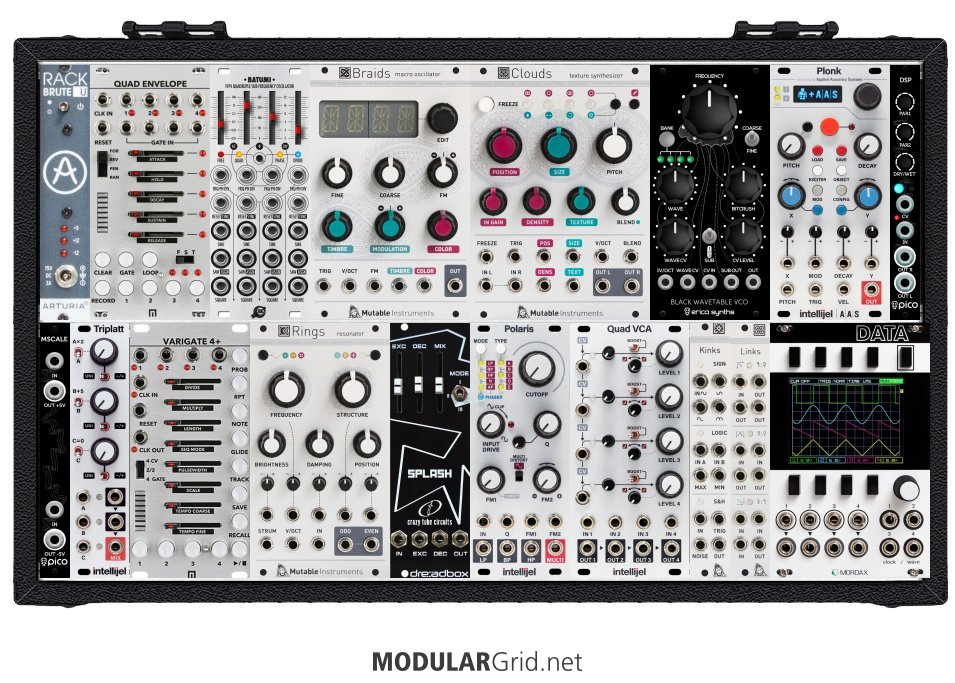
It still shows the old one???
Thanks for the advice. I will definitely check out the MISO that sounds cool. Yeah I kinda felt between the storm, lubadh, and chronoblob2 I had perhaps too many effects (especially considering the things the distings can do).
Yeah I've been drooling over modules for awhile then with the corona-bucks coming in (in the USA) got a bit of seed money to start this exciting but dangerous habit. Yeah I am trying to figure out how to mix the different signals. Right now with my limited set up I am using the quad VCA as a mixer. But once I have more reason to use VCAs I will refigure out how to mix things down. I will cross that bridge when I get there.
I more meant, that it looks like according to this that the Storm is a direct copy of the microcell that was undercut in price massively at release (though that is allowed based on Creative Commons license). Source: https://www.muffwiggler.com/forum/viewtopic.php?f=16&t=217247&start=25 Here the microcell maker seemed a bit peeved and I felt bad that I bought a copy without knowing.
Thanks, again!
Actually, the Mutable Instruments modules are open source projects. Yes, that also means that Mutable doesn't get paid from the clones...but it DOES mean that when Mutable takes them out of production, there's still ways to acquire that same circuitry, even if the panels and form factor might be different.
The only "hole" I see here is that there's no dedicated method for manipulating CV and modulation signals...mixing, inverting, etc. But the rest of the choices are very solid...which means there's going to be a problem in trying to jam that functionality in. My choice for what should go would be the Chronoblob2, which would open 12 hp. This would make two very good CV manipulators possible: the 4ms SISM and Tiptop's MISO. Both of these allow DC-coupled mixing, but also inversion, various CV arithmetic functions, etc, and having those will really blow open your control possibilities. Plus, if you still insist on having the delay line in there, the MISO would allow for a 2hp Delay; if you locate this on the very end of a row, it'll still be easy enough to manipulate.
But if tandemmed with the 0-Coast, this is a pretty damn good build. Presumably, you'd sum your audio back down to the 0-Coast's output to get the levels down to line. Looks like you did your homework here!
Hey everyone,
I am starting to dip my toes into Eurorack as my quarantine new hobby/exploration. About a year ago I got an Make Noise 0-coast and more recently a Moog Grandmother to start seeing how I liked it. Turns out I enjoy the patching and noise exploration side of things. So far music I've been making has been wonky noise, dark techno-ish, experimental things but that's mostly because I don't have a full grip. Eventually I would like to figure out making generative ambient while also enjoying dark music.
In the last week I got a Pamela's New Workout, Storm (Clouds expanded clone... I learned this company copied the design from another... sorry other company!), quad vca, maths, and Rene v2. I've been using the 0coast and grandmother oscillators and other functions. But below is how I envision building it but I would love some feedback.
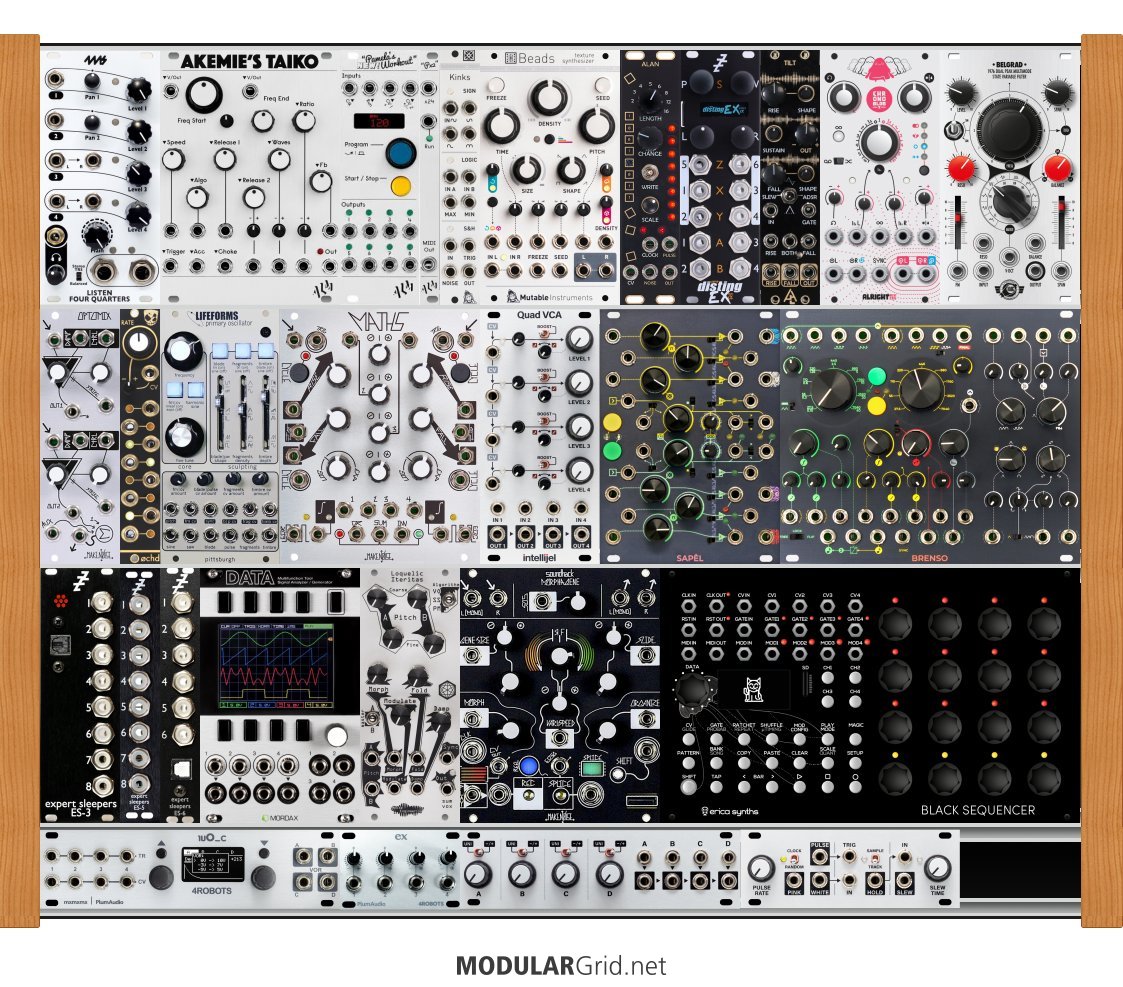
Anyways, do I have any glaring holes (apart from drums/percussion- I will likely explore that once I have a solid effects and synth voice oscillator system)?
Thanks!
Hi Kel,
You are welcome and I am glad to hear that things run well. So it looks like it was worthwhile mentioning it here in this forum :-)
I wish you good luck and I look forwarding in hearing from you as soon as your second album is ready! :-D
Kind regards, Garfield.
For review reports of Eurorack modules, please refer to https://garfieldmodular.net/ for PDF formatted downloads